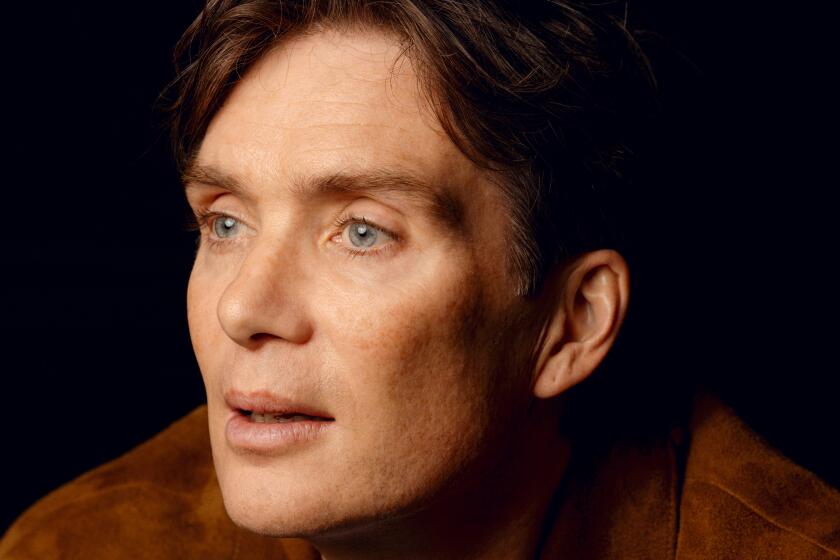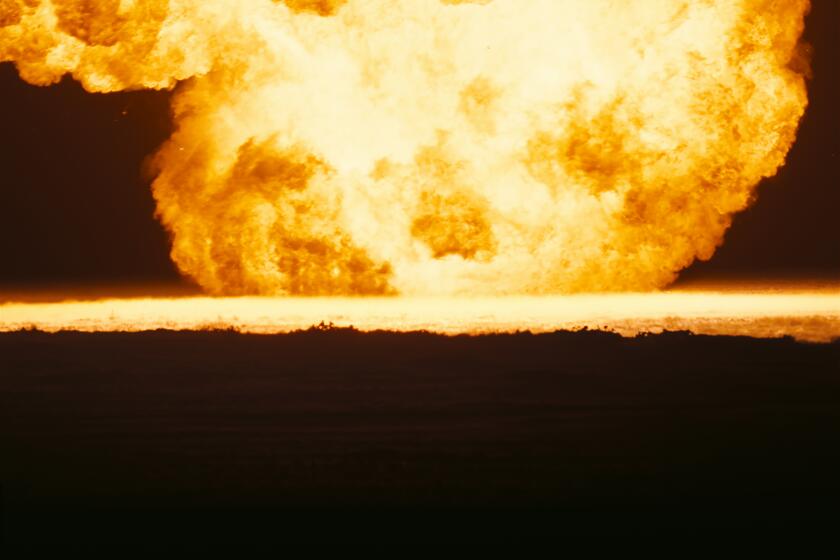Hoyte van Hoytema is ready for his close-ups with ‘Oppenheimer’
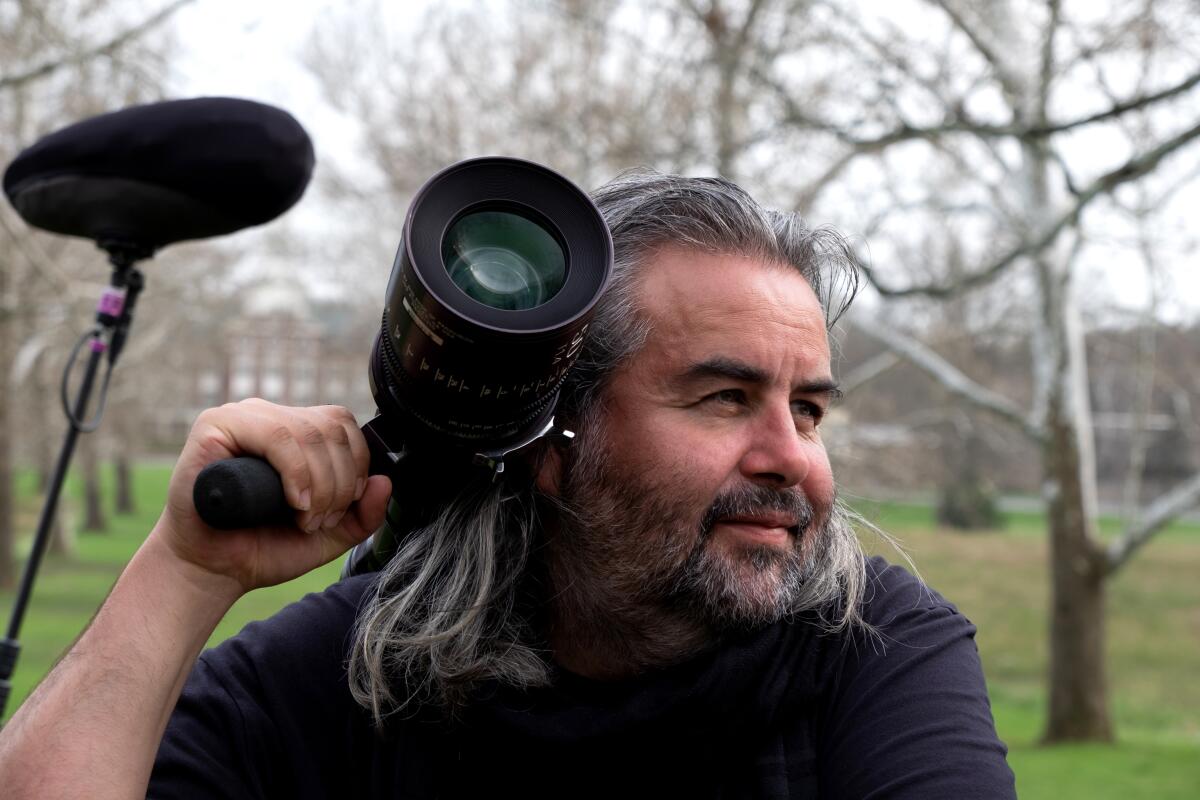
- Share via
Hoyte van Hoytema hurt his back. No, it wasn’t with one of the 54-pound Imax cameras the cinematographer maneuvers for the films he’s made with director Christopher Nolan: “Interstellar,” “Dunkirk,” “Tenet” and, most recently, “Oppenheimer.”
“It literally happens when I pick up tiny objects from the floor or something,” the bed-resting Dutch director of photography says, in good spirits at the start of a Zoom audio interview.
One could make the leap that that reflects what he and Nolan did with big, 65-millimeter technology for their film about J. Robert Oppenheimer, “the father of the atomic bomb.” Much of the movie’s three-hour running time is spent close-in on the faces of star Cillian Murphy and others. It was, to say the least, a novel approach to a cerebral epic about the device that ended World War II.
Van Hoytema, who was born in Switzerland, educated at Poland’s legendary Lodz Film School (Krzysztof Kieslowski supervised one of his student projects) and started his career in Sweden with Tomas Alfredson’s “Let the Right One In,” among others, knew that “Oppenheimer” would be simpler yet perhaps more daunting than previous space- and time-spanning Nolan productions.
The actor and director Christopher Nolan share a mutual interest in conveying a character’s emotional conflict through close-ups that linger on an actor’s face and allow the audience to feel inner turmoil.
“I understood early that this was going to be a film about faces,” Van Hoytema recalls. “There it was, a very new challenge for us. In the older films, we could resort to wide shots, spectacle. This film was really turning inwards; it was all about expressions and faces and intimacy, subjectivity.”
Long enamored of the 18K resolution that Imax 65 film achieves, Nolan and Van Hoytema never considered shooting “Oppenheimer” with lightweight digital cameras. Panavision’s System 65 film cameras were also employed for shots in which sound and dialogue were crucial. Some takes were done, though, with the wider-gauge, much noisier Imax for love of its image, with hopes that prerecorded soundtracks could be looped-in later.
“We love Imax,” the cinematographer affirms. “Its visceral nature, its immersiveness. Traditionally, Imax has been applied for wideness and bigness and ‘overwhelmingness,’ you can say. Here, the faces became our landscapes. The eyes become the places where we filmmakers project our thoughts. We knew we wanted to get closer with those cameras, be really in there.”
Like many a Nolan production, “Oppenheimer” unfolds along multiple timelines. In general, the narrative before and through World War II is presented in color, whereas the physicist’s postwar conflicts — when anti-communist forces spearheaded by an aggrieved bureaucrat, Lewis Strauss (Robert Downey Jr.), stripped Oppenheimer of his security clearance — play in monochrome.
The color coding works as more than a time stamp, perspective-wise.
“Oppenheimer’s point of view is our color material, Strauss’ point of view is our black and white material,” Van Hoytema notes. “As Oppenheimer is clearly our protagonist, his view is more visceral. Also, the physics experiments we see and everything, is all stuff he envisions in his head. Strauss’ are in black and white, and these two ways of shooting are very much an aid to the audience to separate those two narratives from each other. It’s still simple, but it’s much more an emotional separation than a time/date separation.”
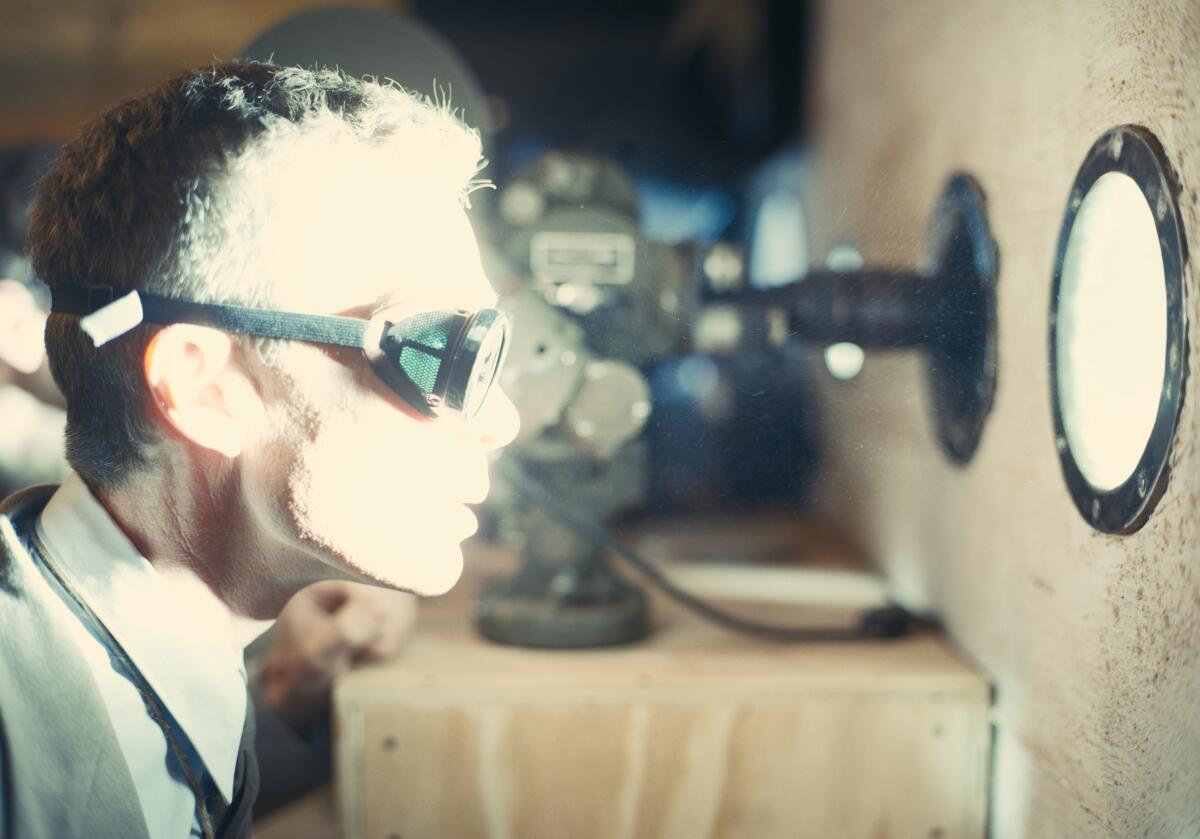
Though much of “Oppenheimer” is close-up and intimate, the film’s central event is a big bang: The first atomic bomb test at Trinity, N.M. The metastasizing mushroom cloud was achieved through practical effects. The flash assault on the explosion’s observers, including Oppenheimer iconically peering through a bunker’s porthole, had to be lit just so.
“We did set off explosions,” albeit not nuclear ones, Van Hoytema confirms with a laugh. “There is a lot of practical light that’s being emitted. You cannot be very consistent with that; every time that you want a close-up you cannot just set off a gigantic explosion. So I had to replicate it with lighting, and I took advantage of how deep we are right now into LED technology. All my light sources on set nowadays are DMX-controlled; we run it through dimmer boards and can change colors and intensity.”
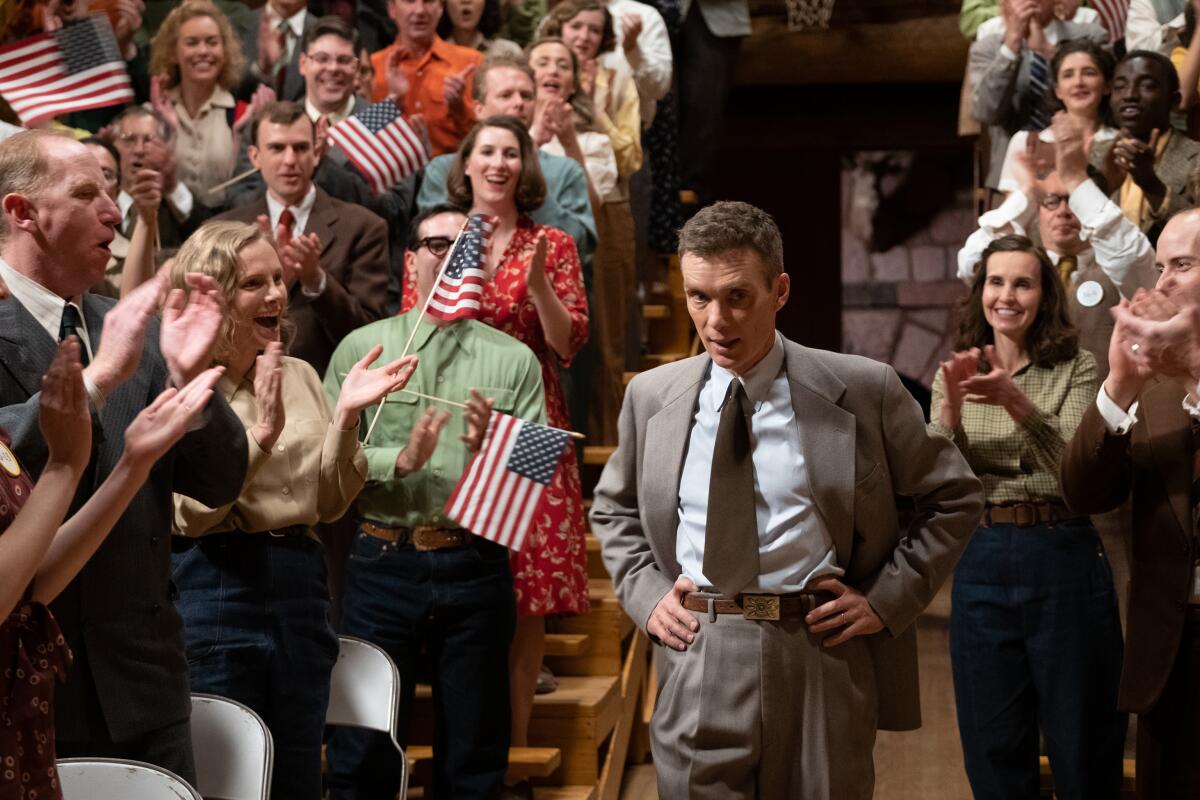
Perhaps a more devastating sequence zeroes in on Murphy. After Japan surrenders following the atom bombing of Hiroshima and Nagasaki, Oppenheimer delivers a victory speech to his cheering scientists in a gym at Los Alamos, the community he built for creating the bomb. While at the lectern, the horrendous implications of what he’s unleashed finally hit the mission-focused physicist while Van Hoytema’s cameras close in for atomic-level impact.
‘Oppenheimer’ VFX supervisor Andrew Jackson reveals how fervid experimentation led to the creation of the nuclear explosion scene.
“At a point we started to really encroach on [Murphy],” the cinematographer says. “I mean, the camera is really up his nose; there is no escaping,” the cinematographer says. “As an audience you become part of his private thought bubble, as it were. We took advantage of this very short depth of field, moving in and out of focus, adding tiny little steps shot at slightly higher frame rates — it definitely adds this unbalanced, doubtful feeling to it all.
“Another trick that we developed with [visual effects supervisor] Andrew Jackson was projecting on the backgrounds. You see a stone wall that starts scintillating and vibrating a bit behind Oppenheimer, the world blown up and falling apart. We used on-set projectors, we’d then add little shakes and jiggles to get that scintillating effect. We did that several times in the film, just to understand the fabric of the world around him from Oppenheimer’s point of view.”
More to Read
From the Oscars to the Emmys.
Get the Envelope newsletter for exclusive awards season coverage, behind-the-scenes stories from the Envelope podcast and columnist Glenn Whipp’s must-read analysis.
You may occasionally receive promotional content from the Los Angeles Times.
